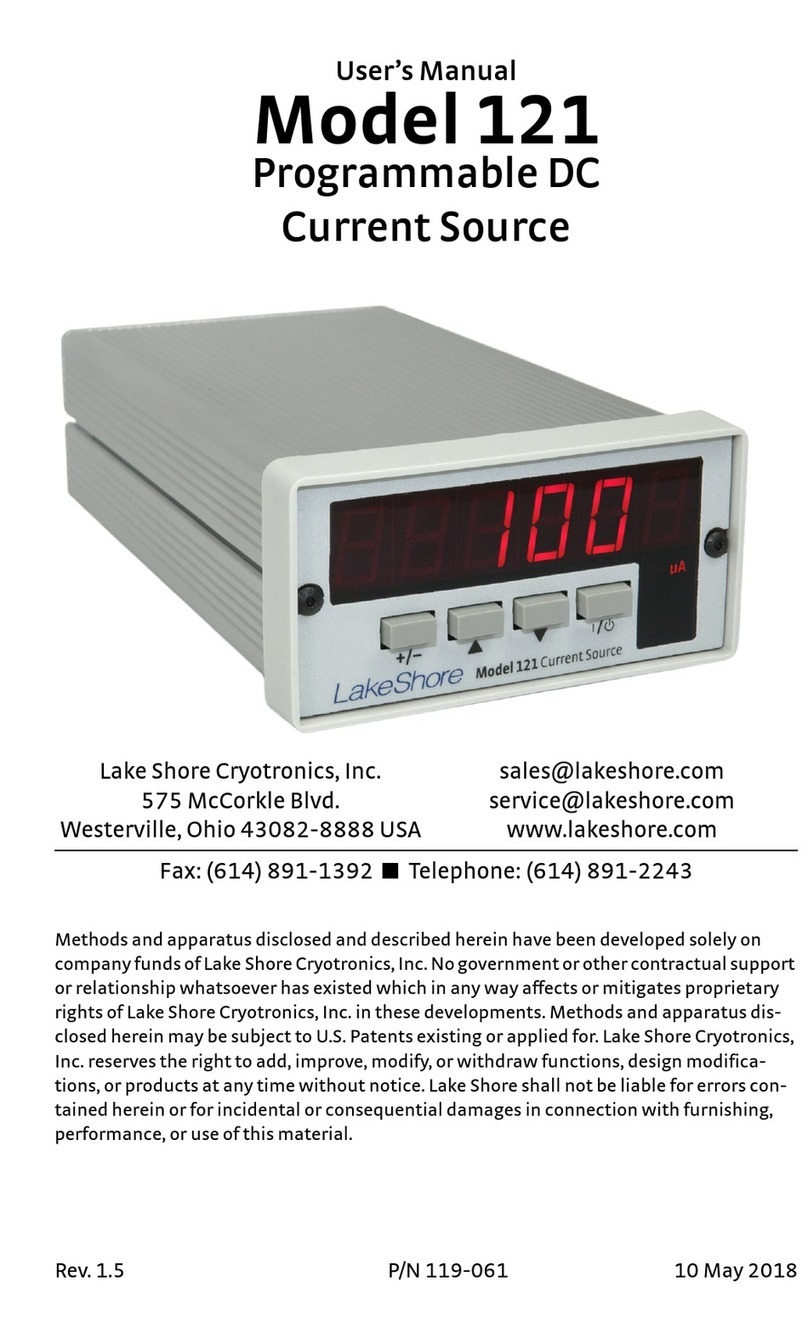
Lake Shore Model 1015 User’s Manual
A
LIMITED WARRANTY
Lake Shore Cryotronics, Inc. (henceforth Lake Shore), the manufacturer, warrants this
product for a period of 12 months from the date of shipment. During the warranty
period, under authorized return of instruments or component parts to Lake Shore
freight prepaid, the company will repair, or at its option replace, any part found to be
defective in material or workmanship, without charge to the Owner for parts, service
labor or associated customary shipping cost. Replacement or repaired parts will be
warranted for only the unexpired portion of the original warranty.
All products are thoroughly tested and calibrated to published specifications prior to
shipment. Calibration Certifications are offered for 6 month periods only. Where such
documentation must be updated, a re-certification service is offered by Lake Shore at
a reasonable cost.
LIMITATION OF WARRANTY
This warranty is limited to Lake Shore products purchased and installed in the United
States. This same protection will extend to any subsequent owner during the
warranty period. It does not apply to damage caused by accident, misuse, fire, flood,
or acts of God, from failure to properly install, operate, or maintain the product in
accordance with the printed instructions provided. This warranty does not apply to
defects resulting from improper or inadequate maintenance, unauthorized
modification or misuse, operation outside of the environmental specifications for any
product or part or buyer-supplied software interfacing.
THIS WARRANTY IS IN LIEU OF ANY OTHER WARRANTIES, EXPRESSED OR
IMPLIED, INCLUDING MERCHANTABILITY OR FITNESS FOR A PARTICULAR
PURPOSE, WHICH ARE EXPRESSLY EXCLUDED. THE OWNER AGREES THAT
LAKE SHORE’S LIABILITY WITH RESPECT TO THIS PRODUCT SHALL BE SET
FORTH IN THIS WARRANTY, AND INCIDENTAL OR CONSEQUENTIAL
DAMAGES ARE EXPRESSLY EXCLUDED.
CERTIFICATION
Lake Shore certifies that this product has been inspected and tested in accordance
with its published specifications and that this product met its published specifications
at the time of shipment. The accuracy and calibration of this product at the time of
shipment are traceable to the United States National Institute of Standards and
Technology (NIST); formerly known as the National Bureau of Standards (NBS), or to
a recognized natural standard.
TRADEMARK ACKNOWLEDGEMENT
Manufacturers and sellers claim many designations as trademarks to distinguish their
products. Where those designations appear in this manual and Lake Shore was
aware of a trademark claim, the designations appear in initial capital letters with a
™ or ®symbol.
Apiezon®is a trademark of Biddle Instruments.
Cryo-Gloves®is a trademark of Tempshield.
Duo-Twist™, Quad-Lead™, Quad-Twist™, and SoftCal™ are trademarks of
Lake Shore Cryotronics, Inc.
Teflon®is a trademark of DuPont De Nemours.
Copyright © 1988, 1997, and 1999 by Lake Shore Cryotronics, Inc. All rights reserved.
No portion of this manual may be reproduced, stored in a retrieval system, or
transmitted, in any form or by any means, electronic, mechanical, photocopying,
recording, or otherwise, without the express written permission of Lake Shore.





























